Kølholm
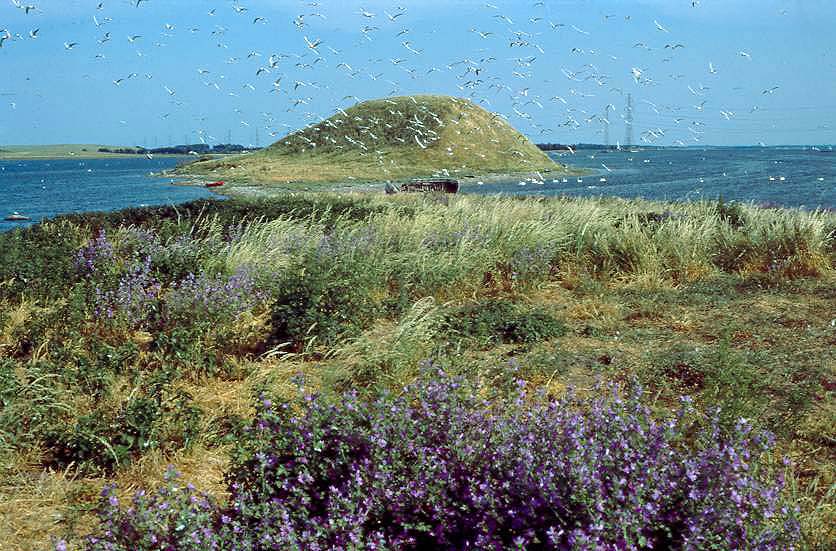
The hill on the southern end of Kølholm, from the northern end.
Kølholm lies just to the south of Frederikssund. The striking 14 metre high hill on the southern end, which has given the island its name (køl means keel), originally had a counterpart at the northern end, but this was quarried and used to build Kalvøen and the railway viaduct which carried the Hornsherred line over the fjord.
Kølholm is part of the Skuldelev Ridge formation, which stretches from Endelev Rev 10 km north of Frederikssund through Kølholm, Skuldelev Ridge, Skrivernæbbet, Færgebro Rev, Bognæs Vestskov, Kattinge and Kornerup to Lejre.
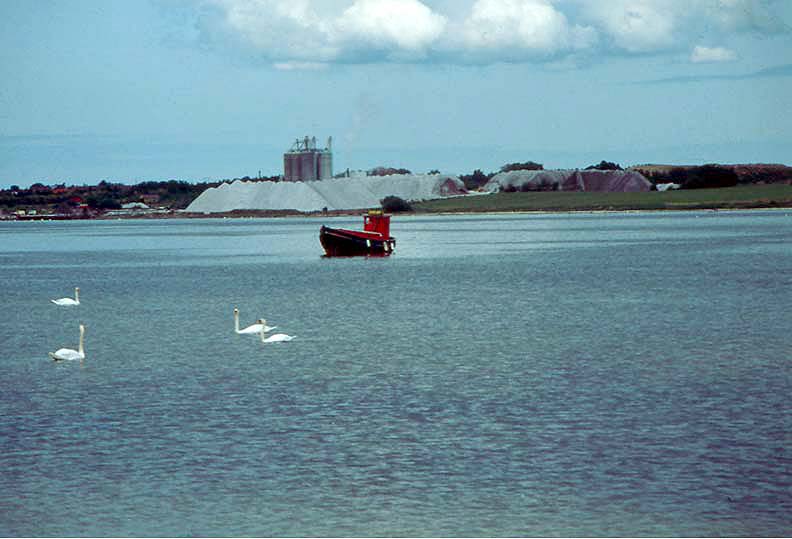 The Øta shell factory, from the top of Kølholm (1993).
The Øta shell factory, from the top of Kølholm (1993).
7-8,000 years ago people found large oyster beds in the narrow passage by Kølholm with the result that there is now a layer of oyster shells about 10 metres deep. Until 1995 this was exploited for the production of chicken fodder, roofing felt and lime. The factory has been demolished and there are plans to build a new bridge over the fjord here.
It was also here that the five Viking ships, now in the Viking Ship Museum in Roskilde, were excavated in 1963.
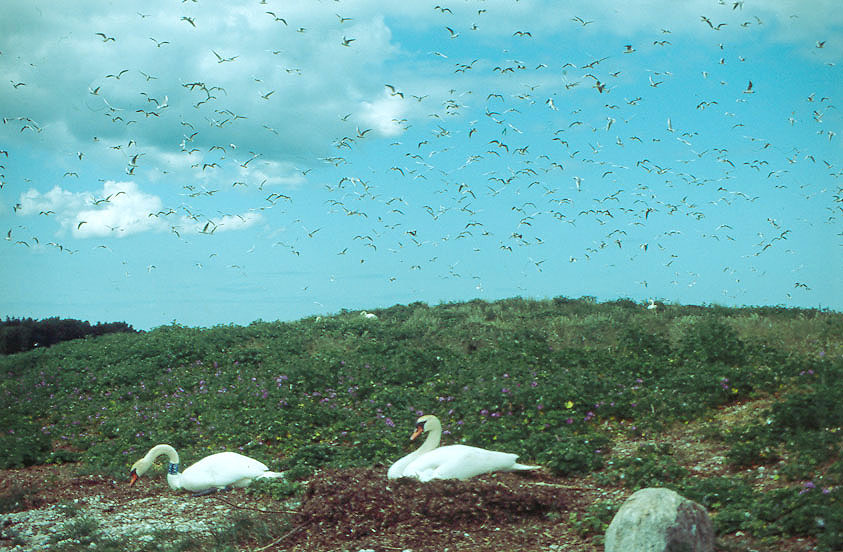 A swan’s nest on the edge of Kølholm’s black-headed gull colony.
A swan’s nest on the edge of Kølholm’s black-headed gull colony.
At the northern end there was a large black-headed gull colony, which was completely destroyed by rats in 1989. The same fate befell the common gull and common tern. It was not possible to exterminate the rats until the winter of 2001-2. At the southern end there is a small herring gull colony and a very big swan colony.
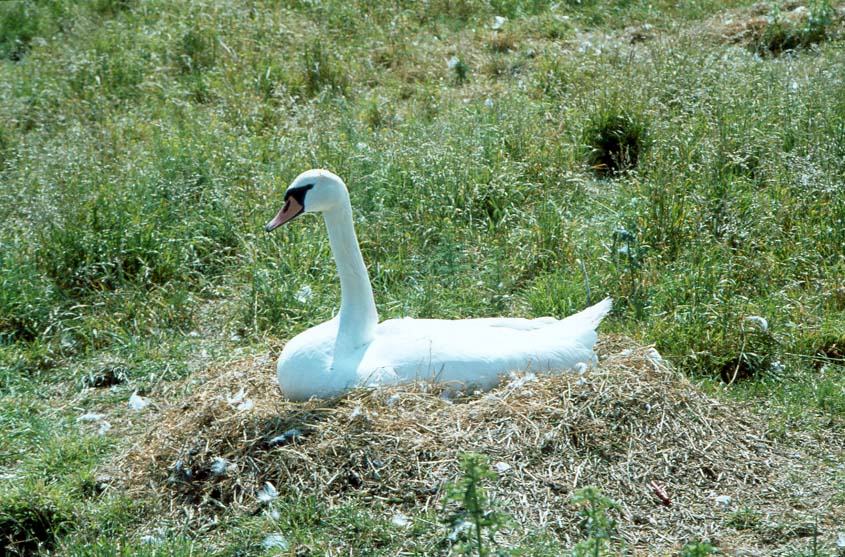 A brooding female mute swan in the northern part of Kølholm.
A brooding female mute swan in the northern part of Kølholm.
Before the advent of the rats a large number of great crested grebes used to breed in the tall vegetation on the island.
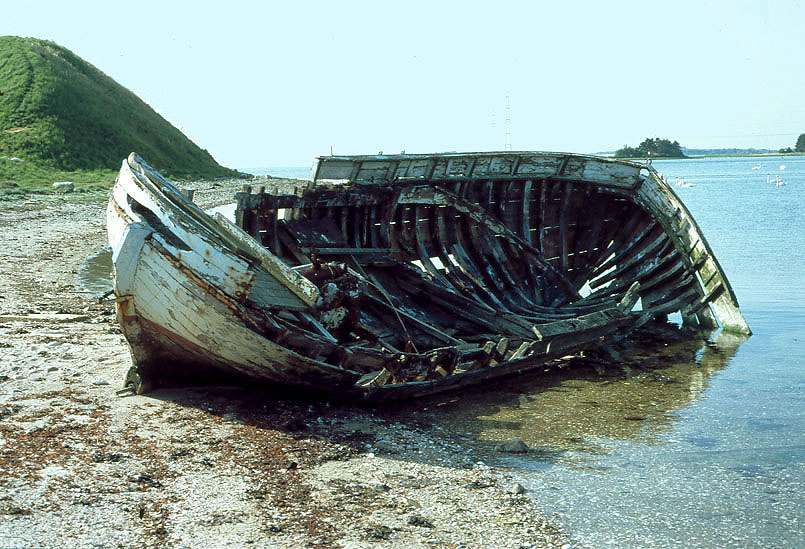 The wreck of a cutter.
The wreck of a cutter.
Predators have been seen on Kølholm several times. In 1992 a stone marten was found to have settled in a wrecked cutter which has lain on the island for many years. In the winters of both 2001 and 2002 dead vixens were found, probably killed by rat poison. Unlike rats, these other predators cross the ice to reach the islands.
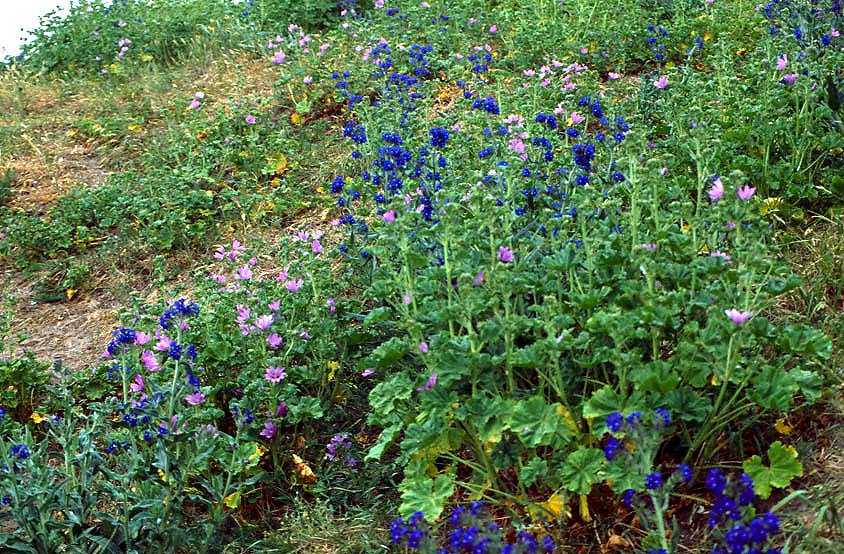
Nitrogen-loving plants (mallow and bugloss) in the black-headed gull colony in northern Kølholm.
There is a rich plant life on Kølholm. Each side of the hill has its own characteristic plant community. Species peculiar to Kølholm include swallow-wort and scotch thistle but by far the most dominant species is the nitrogen-loving common nettle, which exploits the gull manure.
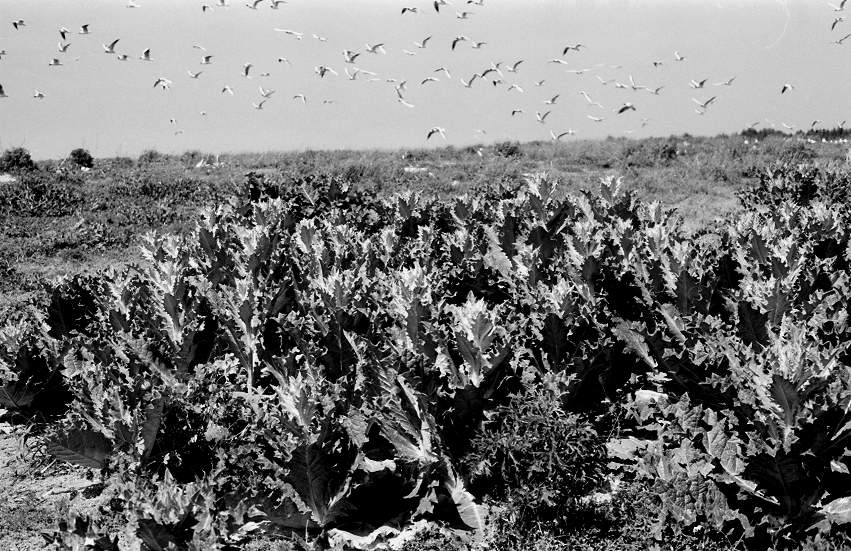 Scotch thistle also thrives in the soil fertilised by the gulls.
Scotch thistle also thrives in the soil fertilised by the gulls.
